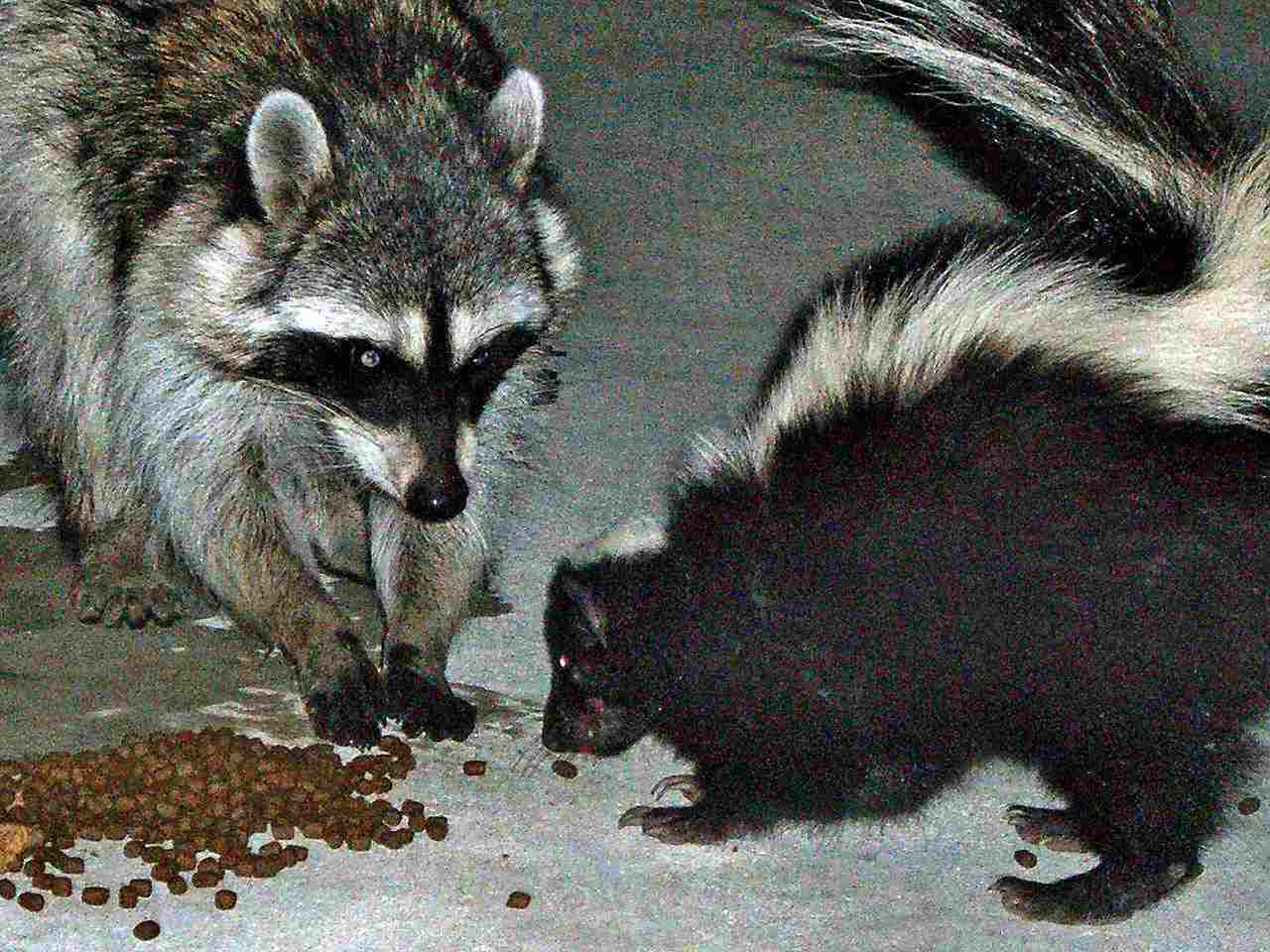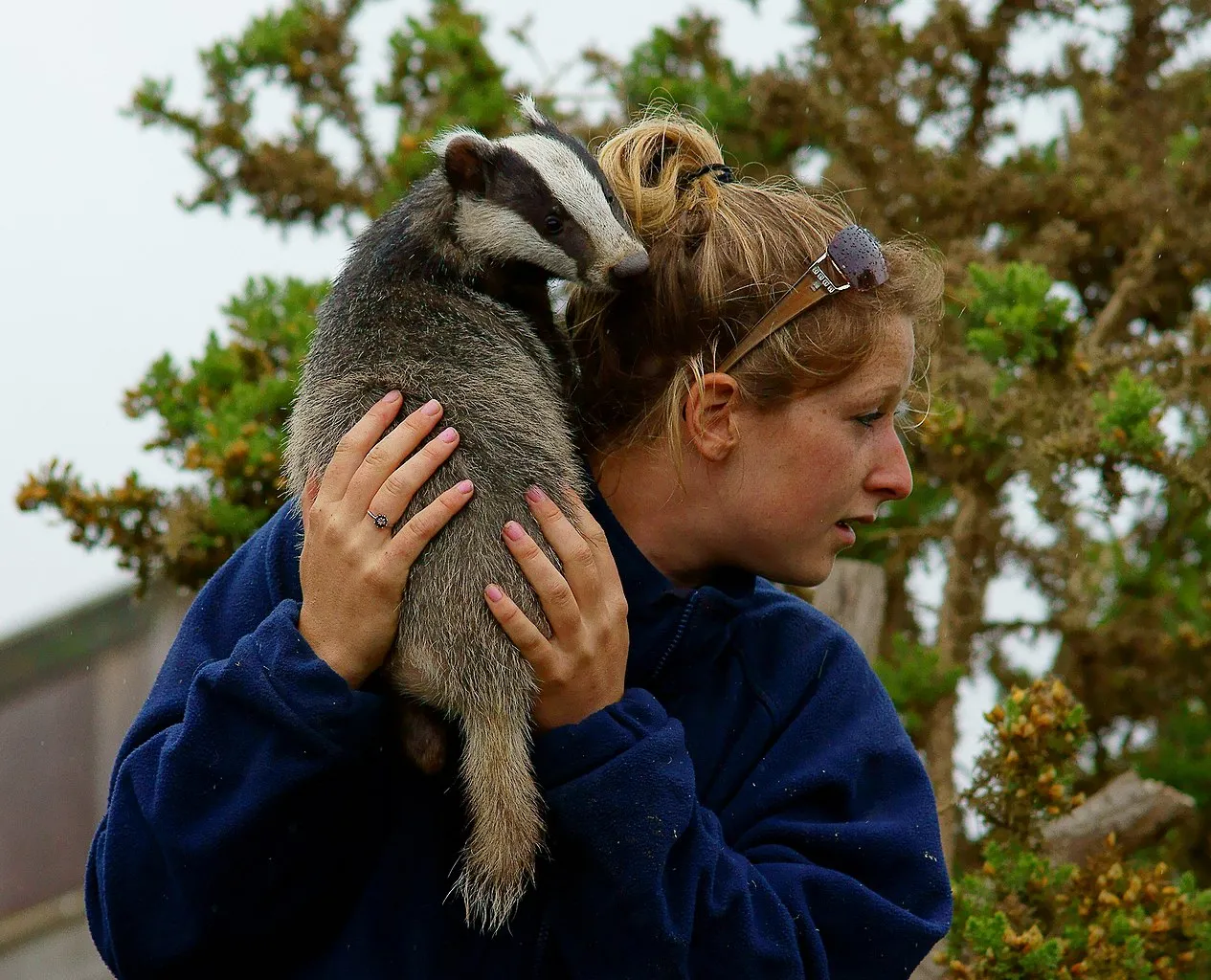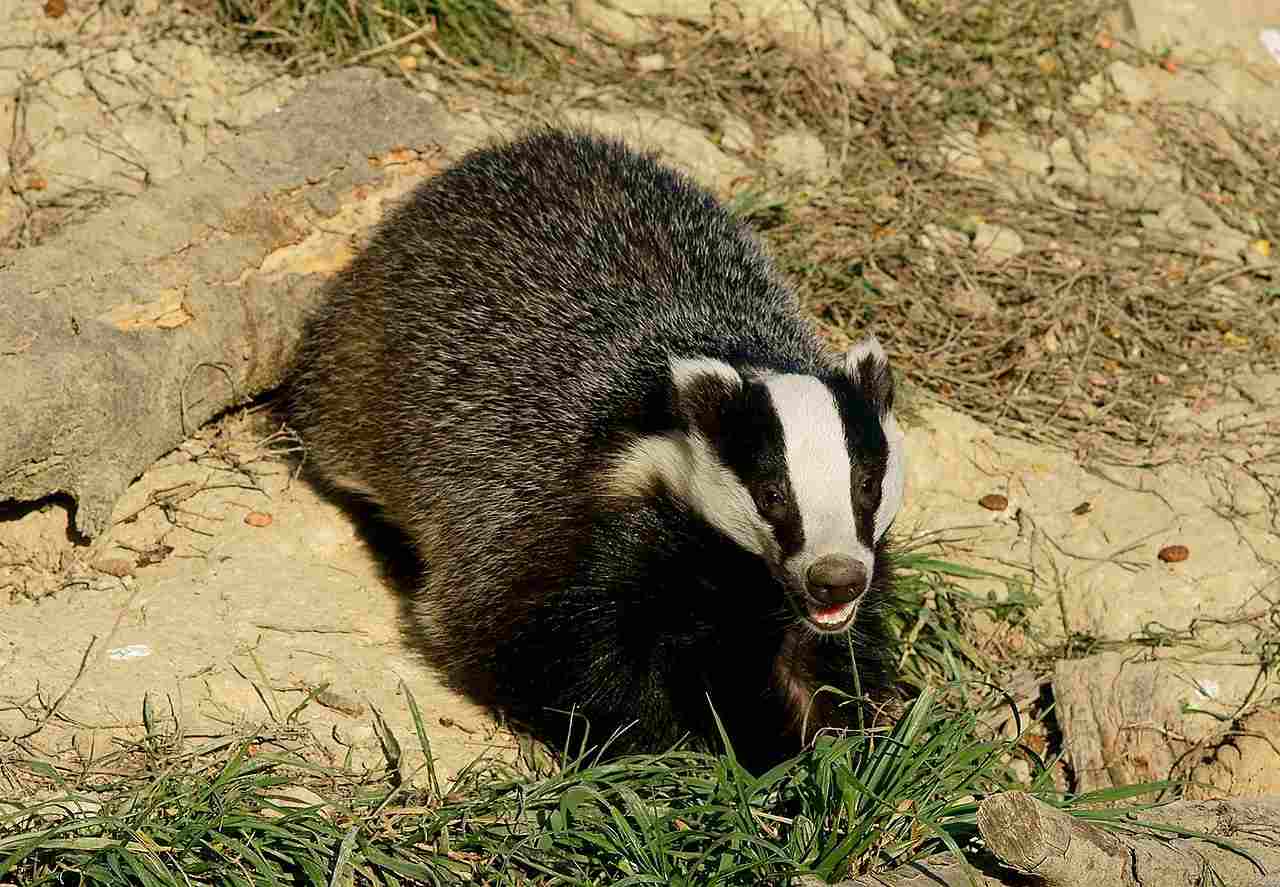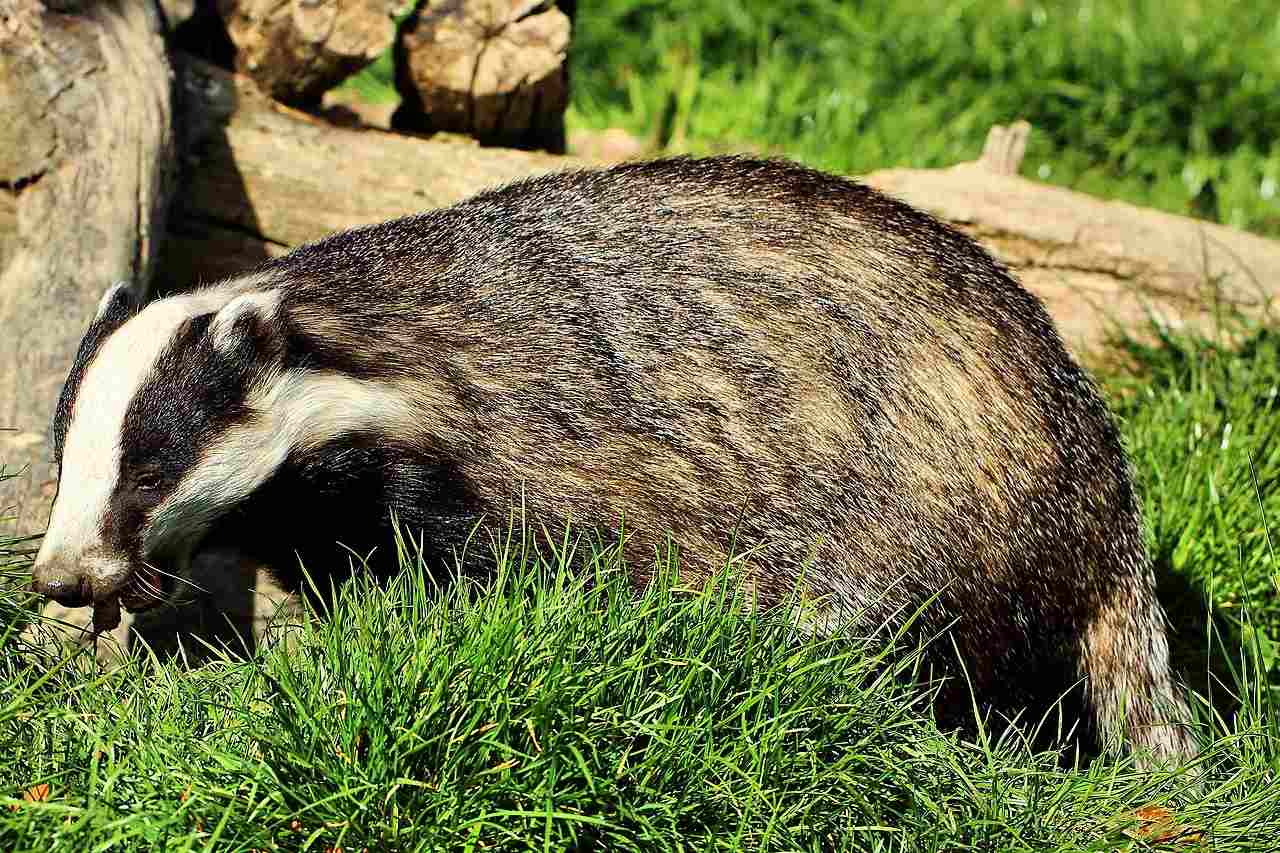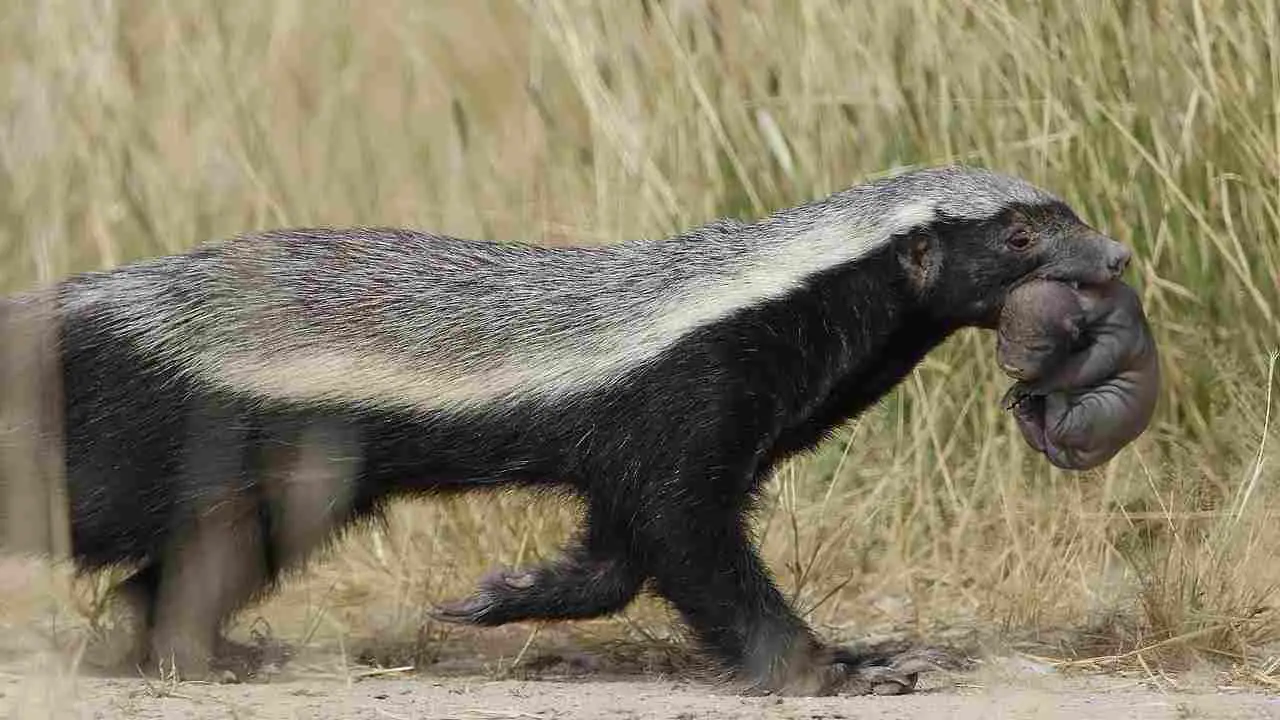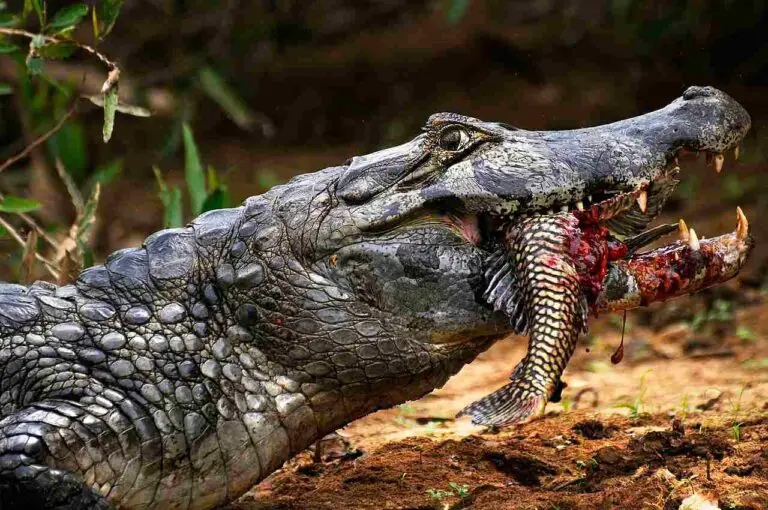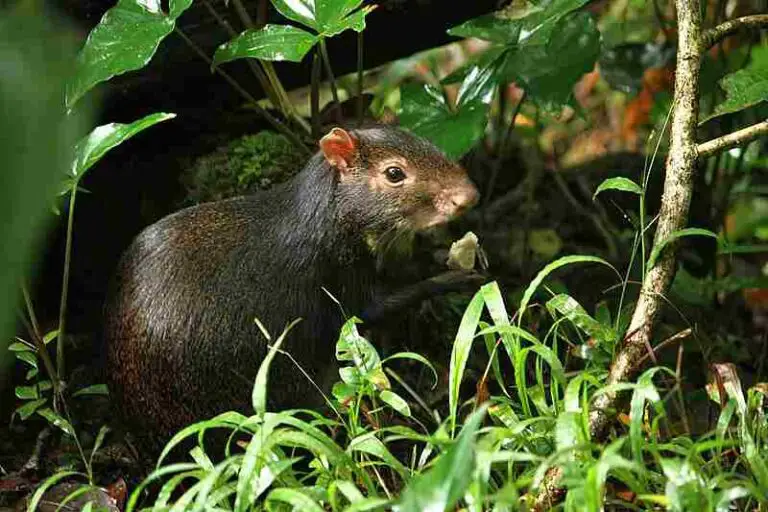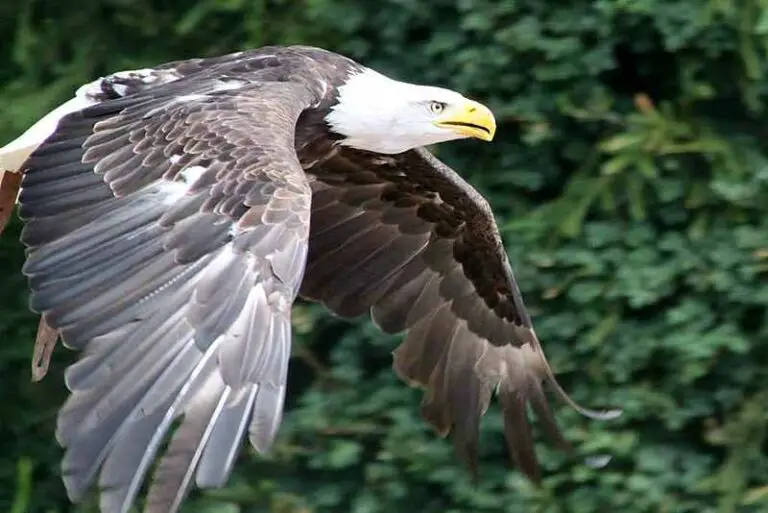Badger Vs Skunk Who Would Win, and Overall Comparison
Within the Mustelidae family, badgers and skunks share similarities but exhibit distinctive characteristics that set them apart. Badgers, known for their toughness and predatory nature, and skunks, recognized for their defensive spray mechanism, present an interesting scenario for a hypothetical confrontation. This analysis explores their taxonomy, appearance, size, weight, and predatory behaviors to speculate on the potential outcome of a one-on-one clash between these two members of the Mustelidae family.
Badger vs Skunk: Assessing the Likely Victor in a Confrontation
In a hypothetical one-on-one confrontation between a badger and a skunk, the badger is likely to emerge victorious due to its larger size, heavier weight, and generally more predatory nature.
I). Size and Weight Advantage:
– Badgers, generally larger and heavier than skunks, possess a significant advantage in size. This larger physical stature provides the badger with a potential upper hand in confrontations, where size plays a crucial role in determining dominance.
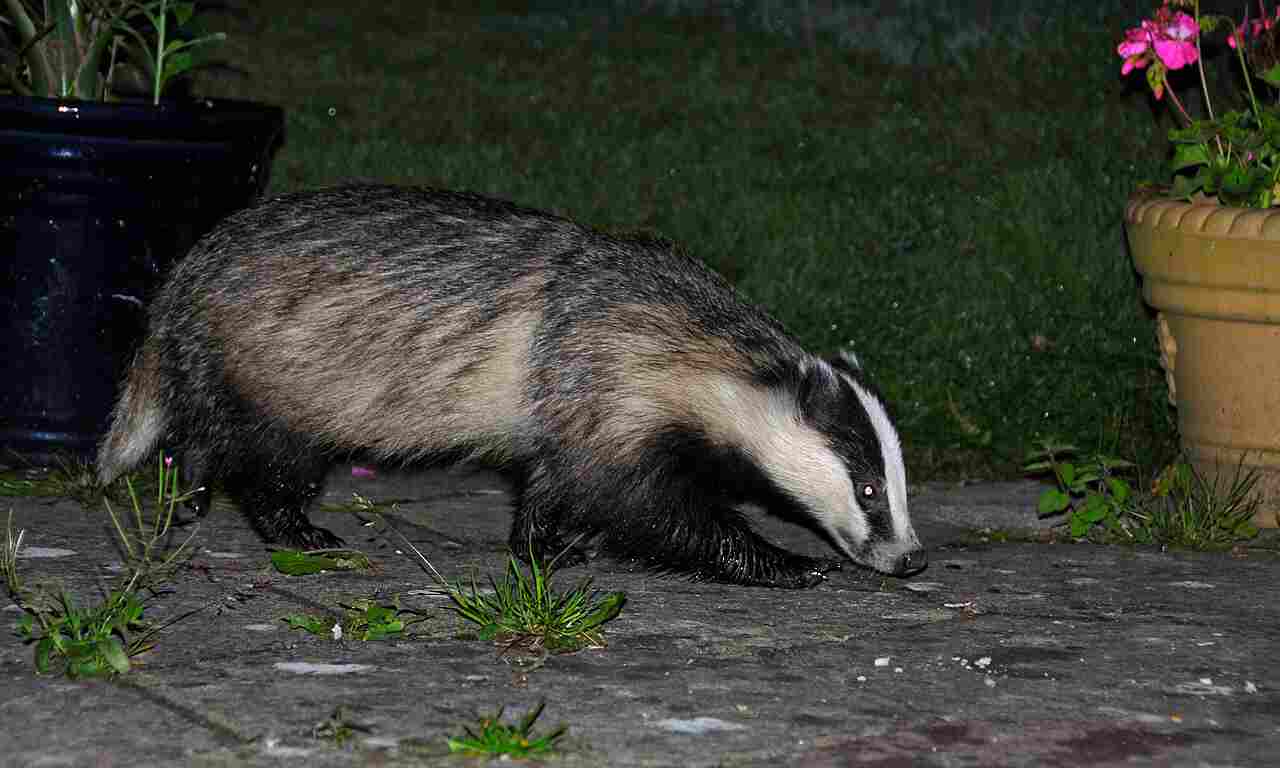
II). Predatory Nature:
– Badgers are known for their predatory behaviors, actively hunting small mammals and birds. This inherent predatory nature gives the badger a decisive edge in a confrontation with a skunk, as it is more adapted to aggressive encounters.
III). Tail Morphology:
– While the main observable difference between badgers and skunks lies in their tail morphology, with skunks having bushy tails, this feature may not play a significant role in a one-on-one fight. The overall size, weight, and predatory instincts of the badger are more likely to determine the outcome.
IV). Overall Predatory Superiority:
– The combination of larger size, heavier weight, and a generally more predatory nature positions the badger as the likely victor in a confrontation with a skunk. While skunks have their defensive mechanisms, the overall traits of the badger give it a decisive advantage in determining the outcome of a physical clash.
*Details of Comparison
| Category | Badger | Skunk |
| Taxonomy | Kingdom: Animalia, Phylum: Chordata, Class: Mammalia, Order: Carnivora, Family: Mustelidae, Genus: Taxidea, Species: T. taxus |
Kingdom: Animalia, Phylum: Chordata, Class: Mammalia, Order: Carnivora, Family: Mephitidae
|
| Appearance | Stout, black and white facial markings, gray or reddish-brown fur |
Moderately stout, black and white coloration
|
| Size | 24-36 inches in length |
15-37 inches in length
|
| Weight | 15-30 pounds | 4-15 pounds |
| Bite Force | Strong jaws, adapted for digging and hunting |
Lesser bite force, adapted for feeding on insects
|
| Physical Offensive Advantages | Claws for digging, strong jaws |
Scent glands for noxious spray
|
| Physical Defensive Advantages | Thick fur, aggressive behavior |
Noxious spray, warning behavior
|
| Speed | Moderate | Relatively slow |
| Agility | Agile in burrows | Moderate |
| Overall Physical Capacity | Strong, adapted for digging |
Balanced offense-defense
|
| Habitat Preference | Open grasslands, woodlands |
Adaptable to various environments
|
| Tracks | Five-toed with claw marks, larger front tracks |
Five-toed with claw marks, smaller tracks
|
| Lifespan | 3-4 years | 2-4 years |
| Mode of Feeding | Carnivorous | Omnivorous |
| Social Behavior | Solitary, territorial |
Mostly solitary, less territorial
|
| Mode of Reproduction | Live birth, 1-5 cubs |
Live birth, 4-7 kits
|
| Parental Behavior | Maternal protection |
Maternal protection
|
| Proximity to Human-Inhabited Areas | May be found in rural areas, occasional conflicts |
Highly adaptable to urban and suburban environments, frequent encounters
|
| Behavior Toward Humans | Generally avoids, may display aggression if threatened |
Typically shy, defensive spraying if startled
|
| Danger Posed to Humans | Rarely poses a direct threat, may be aggressive if provoked |
Generally not aggressive, defensive spray can be problematic
|
| Associated Precautions | Avoid approaching or cornering, secure garbage |
Provide secure food storage, exercise caution to avoid startling
|
| Ecological Functions | Controls rodent populations, modifies landscapes through digging |
Contributes to pest control, defensive spray impacts predator-prey dynamics, adapts to urban environments
|
| Conservation Status | Varies, potential threats from habitat loss and road mortality |
Generally stable populations, adaptable nature contributes to resilience
|
Key Points:
- Badgers are larger and heavier than skunks.
- Badgers have a more powerful bite force adapted for digging and hunting.
- Skunks possess scent glands for a noxious spray as a unique defense mechanism.
- Badgers are more territorial and aggressive, while skunks are adaptable and less territorial.
- Badgers prefer open grasslands and woodlands, while skunks are adaptable to various environments, including urban areas.
- Both species contribute to ecosystem health through pest control, but their ecological functions differ.
1. Taxonomy:
Badger (Taxidea taxus):
Kingdom: Animalia
Phylum: Chordata
Class: Mammalia
Order: Carnivora
Family: Mustelidae
Genus: Taxidea
Species: T. taxus
Skunk (Mephitidae family):
Kingdom: Animalia
Phylum: Chordata
Class: Mammalia
Order: Carnivora
Family: Mephitidae
(Various species within the family, e.g., Mephitis mephitis – Striped Skunk, Spilogale putorius – Eastern Spotted Skunk)
2. Appearance:
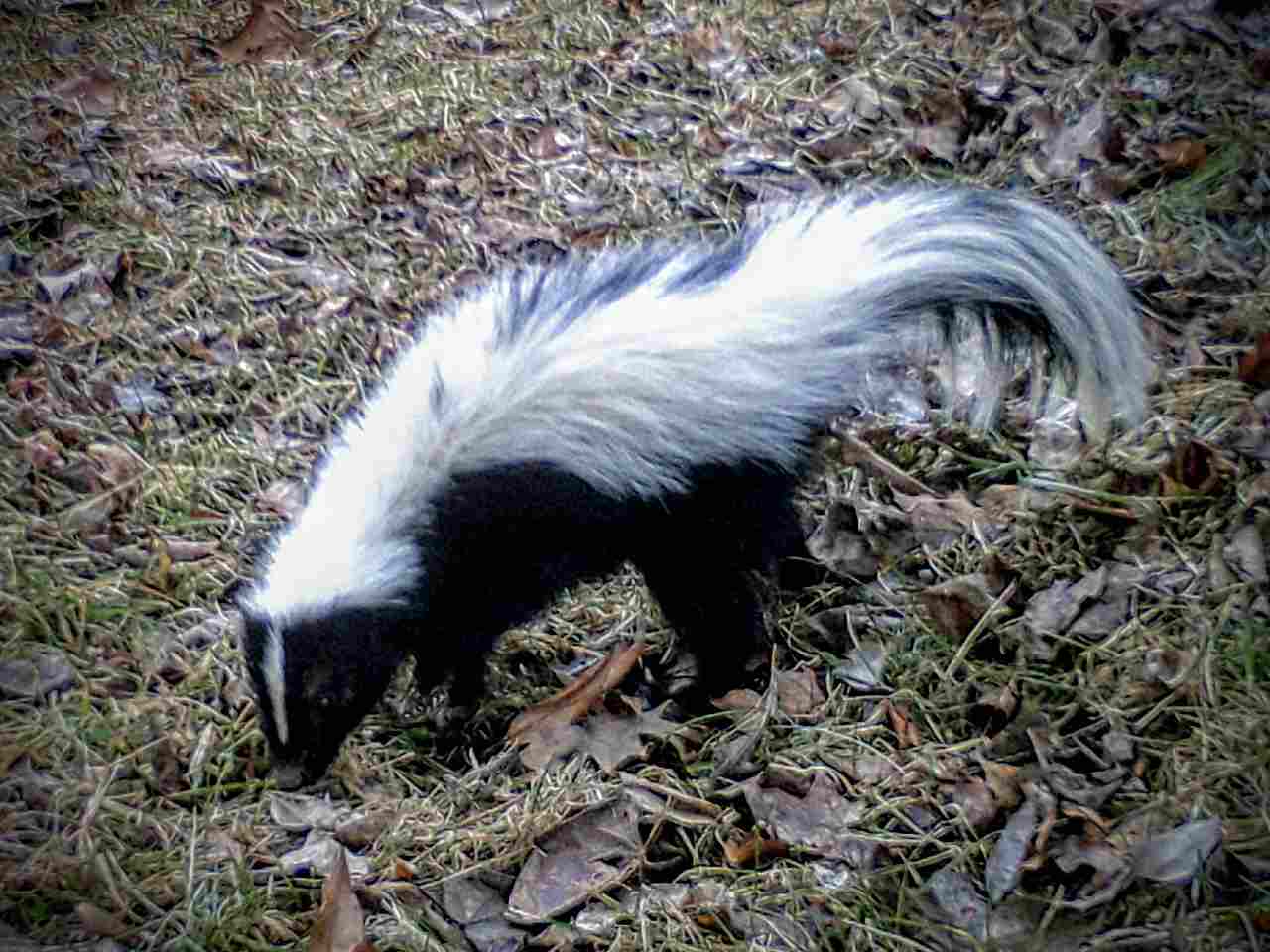
Badger:
Stout body with short legs.
Characteristic black and white facial markings.
Fur color varies, commonly gray or reddish-brown.
Sharp claws for digging.
Skunk:
Moderately stout body with distinct black and white coloration.
Bushy tail and well-developed scent glands.
Fur color varies, often black with white stripes.
Can display a warning posture, raising tail and stomping feet.
Comparison: Badgers and skunks share a stout build, but badgers have distinctive facial markings, while skunks are recognized for their black and white coloration and unique warning behavior.
3. Size:
Badger:
Length: 24 to 36 inches (excluding tail).
Height: 9 to 11 inches at the shoulder.
Skunk:
Length: 15 to 37 inches (including tail).
Height: 6 to 10 inches at the shoulder.
Comparison: Badgers tend to have a more consistent size range, while skunks exhibit greater variability in length.
4. Weight:
Badger:
Typically 15 to 30 pounds.
Skunk:
Varies by species, generally 4 to 15 pounds.
Comparison: Badgers are generally heavier, with a more substantial weight range compared to skunks.
5. Bite Force:
Badger:
Strong jaws and bite force adapted for digging and capturing prey.
Skunk:
Lesser bite force, primarily used for feeding on insects and small vertebrates.
Comparison: Badgers have a more powerful bite force, reflecting their digging and hunting habits, while skunks have adapted for a different feeding strategy.
Ecological Implications:
Badgers play a crucial role in controlling rodent populations, helping maintain ecological balance.
Skunks contribute to pest control by feeding on insects, but their scent glands act as a deterrent against potential predators.
Both species contribute to soil aeration through digging activities, impacting local ecosystems.
6. Physical Offensive Advantages:
Badger:
Powerful claws for digging and burrow construction.
Sharp teeth and strong jaw for capturing prey.
Skunk:
Scent glands capable of producing a noxious spray as a defense mechanism.
Comparison: Badgers rely on physical strength for offense, particularly through digging, while skunks possess a unique chemical defense mechanism.
7. Physical Defensive Advantages:
Badger:
Thick fur provides some protection.
Aggressive behavior, including hissing and growling.
Skunk:
Noxious spray from scent glands.
Stomping and raising the tail as a warning.
Comparison: Both species exhibit defensive behaviors, with badgers relying on aggression and skunks utilizing chemical defenses.
8. Speed:
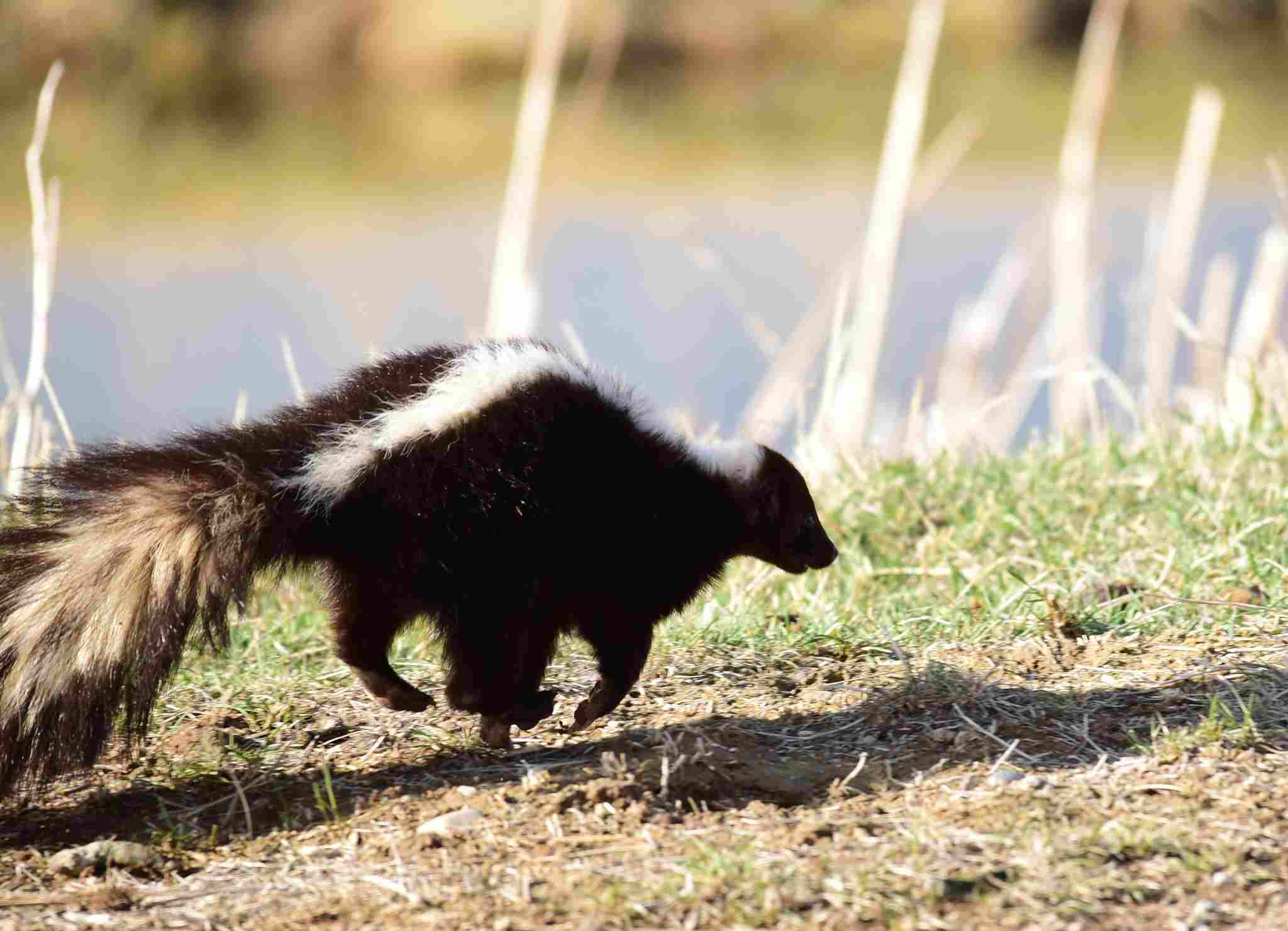
Badger:
Moderate running speed, adapted for short bursts.
Skunk:
Relatively slow runners, relying more on defensive tactics.
Comparison: Badgers have a slightly better running speed, suitable for chasing prey or escaping predators.
9. Agility:
Badger:
Agile in burrows and tunnels due to a flexible body.
Skunk:
Moderate agility, particularly when navigating obstacles or evading predators.
Comparison: Badgers showcase greater agility within confined spaces, an adaptation for their burrowing lifestyle, while skunks exhibit moderate agility for their ground-dwelling habits.
10. Overall Physical Capacity:
Badger:
Strong and robust, well-adapted for digging and burrow construction.
Muscular build for capturing and subduing prey.
Skunk:
Moderately built, with a focus on defensive mechanisms.
Well-adapted for ground-dwelling and opportunistic feeding.
Comparison: Badgers have a more specialized physical capacity for digging and hunting, while skunks are adapted for a balance between offense and defense.
11. Habitat Preference(s):
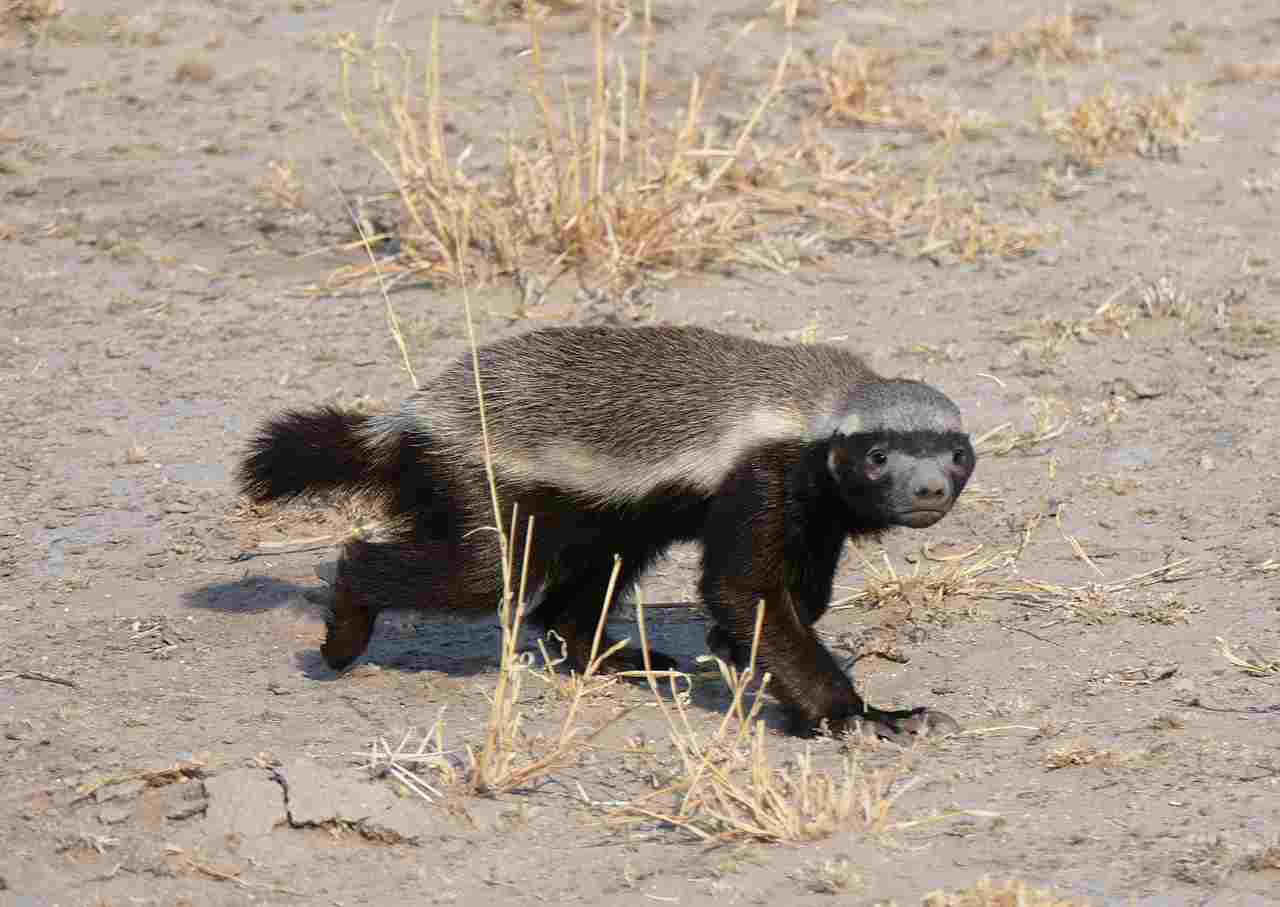
Badger:
Prefers open grasslands and woodlands.
Constructs elaborate burrow systems for shelter.
Skunk:
Adaptable to various environments, including forests, suburban areas, and grasslands.
Utilizes dens for shelter.
Comparison: Badgers show a preference for open landscapes, whereas skunks are adaptable to a broader range of habitats, including human-altered environments.
12. Tracks:
Badger:
Distinctive five-toed tracks with claw marks.
Front tracks are larger than hind tracks.
Skunk:
Five-toed tracks with visible claw marks.
Generally smaller than badger tracks.
Comparison: Both leave similar five-toed tracks but differ in size, with badgers having larger front tracks.
13. Lifespan:
Badger:
Typically 3 to 4 years in the wild.
Skunk:
2 to 4 years in the wild.
Comparison: Both species have relatively short lifespans, reflecting the challenges of their ecological niche and potential predation risks.
Ecological Implications:
Badgers contribute to ecosystem health by controlling rodent populations and modifying landscapes through burrowing.
Skunks play a role in pest control by feeding on insects, but their defensive spray can deter natural predators, impacting local predator-prey dynamics.
14. Mode of Feeding:
Badger:
Carnivorous diet, primarily consisting of small mammals like rodents.
Excavates burrows to access prey.
Skunk:
Omnivorous diet, including insects, small vertebrates, fruits, and vegetation.
Opportunistic feeders with scavenging tendencies.
Comparison: Badgers are specialized carnivores with a focus on small mammals, while skunks have a broader omnivorous diet.
15. Social Behavior:
Badger:
Generally solitary, but may form family groups.
Territorial and can be aggressive toward intruders.
Skunk:
Mostly solitary, with occasional family groups.
Less territorial but may defend their territory if needed.
Comparison: Both species display solitary tendencies, but badgers are more territorial and aggressive in defending their space.
16. Mode of Reproduction:
Badger:
Generally gives birth to a litter of 1 to 5 cubs.
Mating occurs in late summer, with delayed implantation.
Skunk:
Typically gives birth to 4 to 7 kits.
Mating season varies by species but generally occurs in late winter or early spring.
Comparison: Both reproduce via live birth but differ in the number of offspring and timing of mating.
17. Parental Behavior:
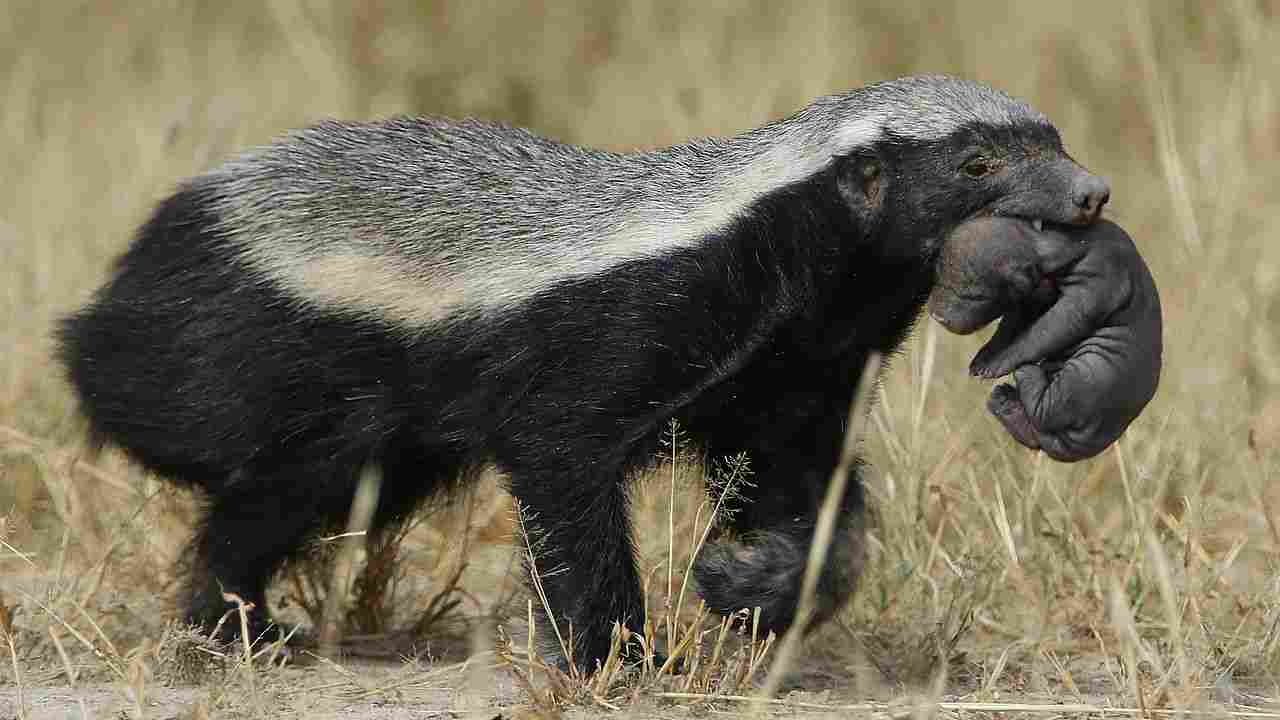
Badger:
Females are protective of their young.
Cubs stay with the mother for several months before becoming independent.
Skunk:
Females are protective but less territorial.
Kits stay with the mother for a few months before venturing on their own.
Comparison: Both exhibit maternal protection, but badgers tend to be more territorial and protective of their young.
18. Proximity to Human-Inhabited Areas:
Badger:
May be found near human settlements, especially in rural areas.
Some conflicts may arise due to digging activities affecting gardens or agricultural land.
Skunk:
Highly adaptable to urban and suburban environments.
Commonly encountered near human dwellings, leading to occasional conflicts.
Comparison: Skunks are more adaptable to human-altered landscapes, often leading to increased encounters and potential conflicts.
19. Behavior Toward Humans:
Badger:
Generally avoids direct contact with humans.
May display aggression if cornered or threatened.
Skunk:
Typically shy but may approach human residences in search of food.
Known for defensive spraying when feeling threatened.
Comparison: Both species tend to avoid direct interaction, but skunks may come closer to human dwellings, leading to more potential encounters.
20. Danger Posed to Humans:
Badger:
Rarely poses a direct threat to humans.
Aggressive behavior if provoked but usually seeks to escape.
Skunk:
Generally not aggressive, but can pose a risk due to defensive spraying if startled.
May carry diseases like rabies.
Comparison: Badgers are less likely to pose a direct threat, while skunks have a unique defensive mechanism that can be problematic for humans.
21. Associated Precautions:
Badger:
Avoid approaching or cornering a badger, especially if it appears threatened.
Secure garbage to reduce attraction to human settlements.
Skunk:
Provide secure food storage to minimize attractants.
Exercise caution when encountering skunks to avoid startling them.
Comparison: Precautions for badgers and skunks involve minimizing potential conflicts, securing food sources, and exercising caution to prevent defensive actions.
Ecological Implications:
Human-wildlife conflicts may arise due to the proximity of both badgers and skunks to human-inhabited areas.
Understanding and implementing proper precautions are essential to mitigate potential conflicts and ensure coexistence.
22. Conservation Status:
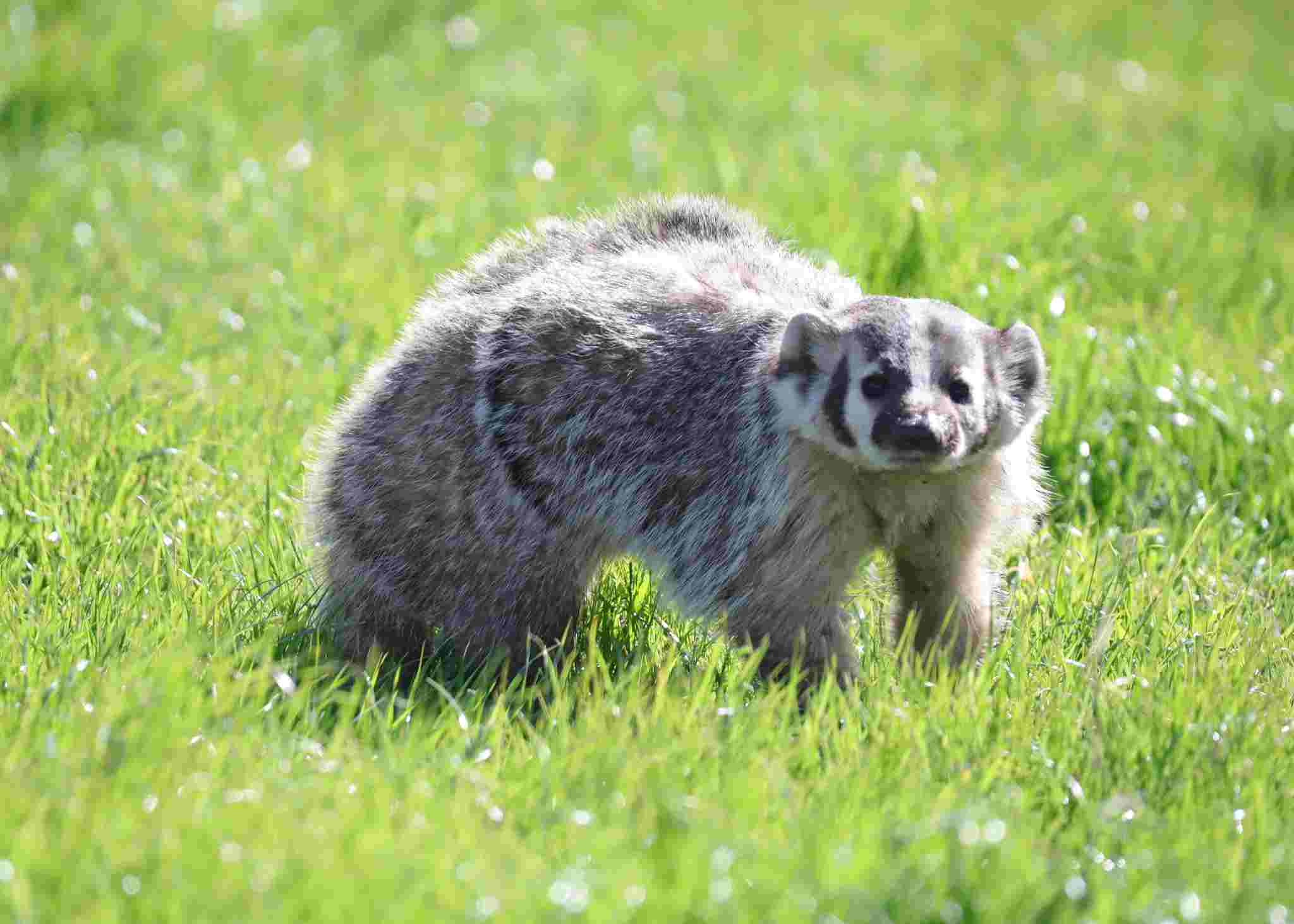
Badger:
Conservation status varies by region and species.
Some populations face threats due to habitat loss and road mortality.
Skunk:
Generally, skunk populations are stable.
Adaptable nature and ability to thrive in various environments contribute to their resilience.
Ecological Implications: The conservation status of badgers highlights the importance of preserving their habitats to prevent declines in vulnerable populations. Stable skunk populations underscore their adaptability but emphasize the need for continued monitoring to prevent unforeseen ecological imbalances.
Summary of Comparison
Badger:
Taxonomy: Animalia, Chordata, Mammalia, Carnivora, Mustelidae, Taxidea, T. taxus.
Appearance: Stout with black and white facial markings, gray or reddish-brown fur.
Size: 24-36 inches in length.
Weight: 15-30 pounds.
Bite Force: Strong jaws and bite for digging and hunting.
Physical Offensive Advantages: Claws for digging, strong jaws.
Physical Defensive Advantages: Thick fur, aggressive behavior.
Speed: Moderate.
Agility: Agile in burrows.
Overall Physical Capacity: Strong, adapted for digging.
Habitat Preference: Open grasslands, woodlands.
Tracks: Five-toed with claw marks.
Lifespan: 3-4 years.
Mode of Feeding: Carnivorous.
Social Behavior: Solitary, territorial.
Mode of Reproduction: Live birth, 1-5 cubs.
Parental Behavior: Maternal protection.
Skunk:
Taxonomy: Animalia, Chordata, Mammalia, Carnivora, Mephitidae.
Appearance: Moderately stout, black and white coloration.
Size: 15-37 inches in length.
Weight: 4-15 pounds.
Bite Force: Lesser, adapted for feeding on insects.
Physical Offensive Advantages: Scent glands for noxious spray.
Physical Defensive Advantages: Noxious spray, warning behavior.
Speed: Relatively slow.
Agility: Moderate.
Overall Physical Capacity: Balanced offense-defense.
Habitat Preference: Adaptable to various environments.
Tracks: Five-toed with claw marks, smaller than badger tracks.
Lifespan: 2-4 years.
Mode of Feeding: Omnivorous.
Social Behavior: Mostly solitary, less territorial.
Mode of Reproduction: Live birth, 4-7 kits.
Parental Behavior: Maternal protection.
Ecological Functions:
Badger:
Controls rodent populations through hunting.
Modifies landscapes through digging and burrow construction.
Aerates soil through burrowing activities.
Skunk:
Contributes to pest control by feeding on insects.
Defensive spray deters potential predators, impacting local predator-prey dynamics.
Adapts to urban environments, influencing local ecosystems near human settlements.
Overall Ecological Implication(s)
Badger:
Habitat Modification:
Burrow construction and digging activities contribute to soil aeration.
Alters landscapes, creating microhabitats within their burrow systems.
Rodent Population Control:
Plays a crucial role in controlling rodent populations, helping maintain ecological balance.
Controls the numbers of small mammals, impacting plant and invertebrate communities.
Skunk:
Pest Control:
Feeds on insects, contributing to pest control in local ecosystems.
Consumes a variety of invertebrates, helping regulate their populations.
Chemical Defense Impact:
Defensive spray acts as a deterrent to potential predators, influencing predator-prey dynamics.
Presence may influence the behavior of other species in shared ecosystems.
Urban Adaptation:
Adapts to urban environments, influencing local ecosystems near human settlements.
Interactions with human-altered landscapes can have indirect effects on local fauna and flora.
Conservation Implications:
Badger:
Conservation efforts should focus on preserving open grasslands and woodlands.
Mitigating threats such as habitat loss and road mortality is crucial for maintaining badger populations.
Skunk:
Stable populations indicate adaptability, but monitoring is essential to prevent unforeseen ecological imbalances.
Conservation strategies should consider the impact of skunks in urban environments, promoting coexistence.
Human-Wildlife Conflicts:
Badger:
Conflicts may arise due to badger burrows affecting gardens or agricultural land.
Balancing the needs of agriculture and conservation is crucial to minimize conflicts.
Skunk:
Frequent encounters near human dwellings may lead to conflicts.
Education on secure food storage and cautious approaches can mitigate conflicts.
Conclusion:
I) Similarities:
Both badgers and skunks belong to the Carnivora order, with adaptations for carnivorous and omnivorous diets.
They play roles in controlling insect and small mammal populations, influencing local ecosystems.
II) Differences:
Badgers are more specialized for digging and hunting small mammals, while skunks have a broader diet and employ a unique chemical defense mechanism.
Skunks are highly adaptable to human-altered landscapes, leading to more frequent encounters and potential conflicts compared to badgers.
Ecological Implications: Recognizing both the similarities and differences in the ecological roles of badgers and skunks helps inform conservation strategies, emphasizing the need to preserve diverse habitats and manage potential human-wildlife conflicts.
